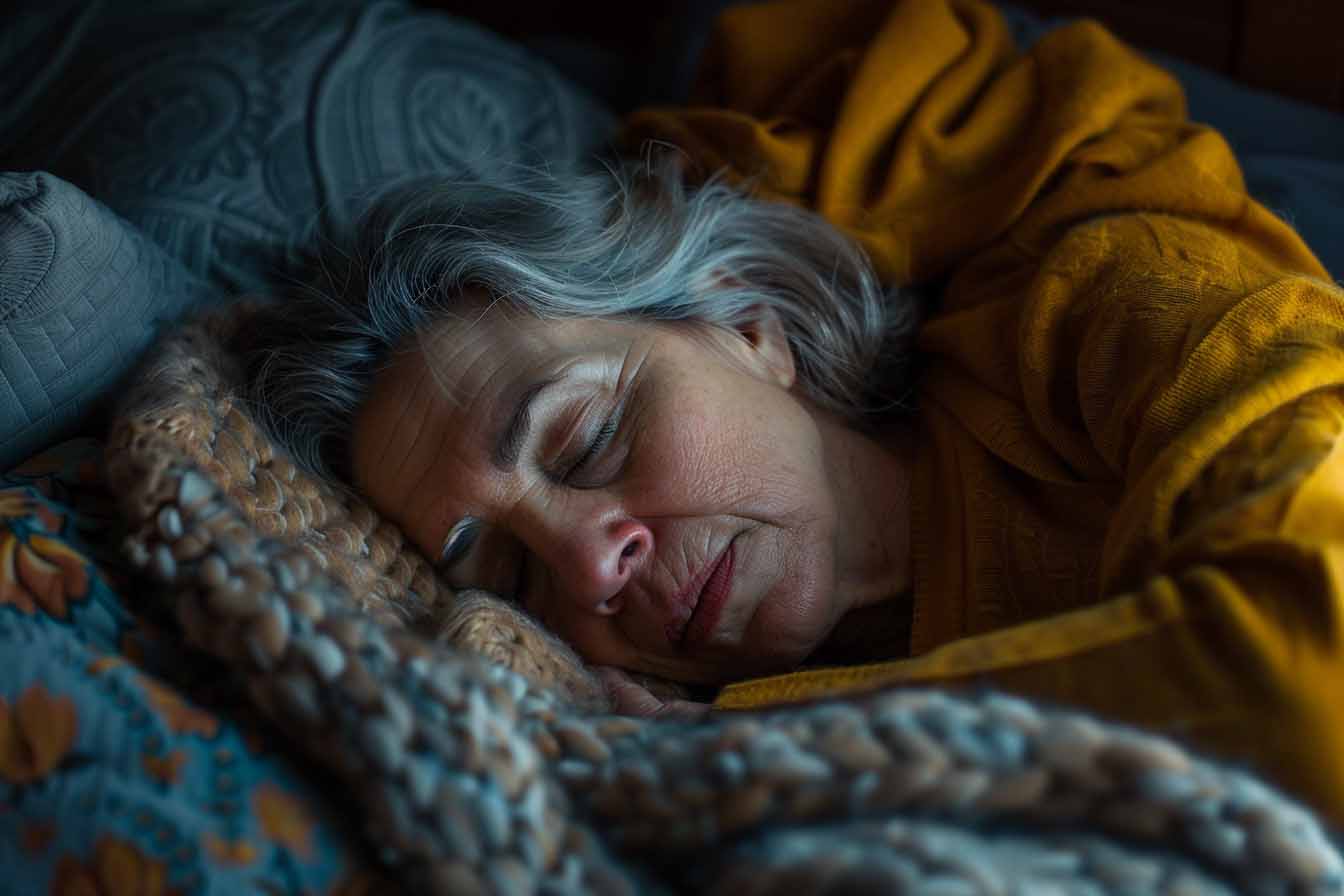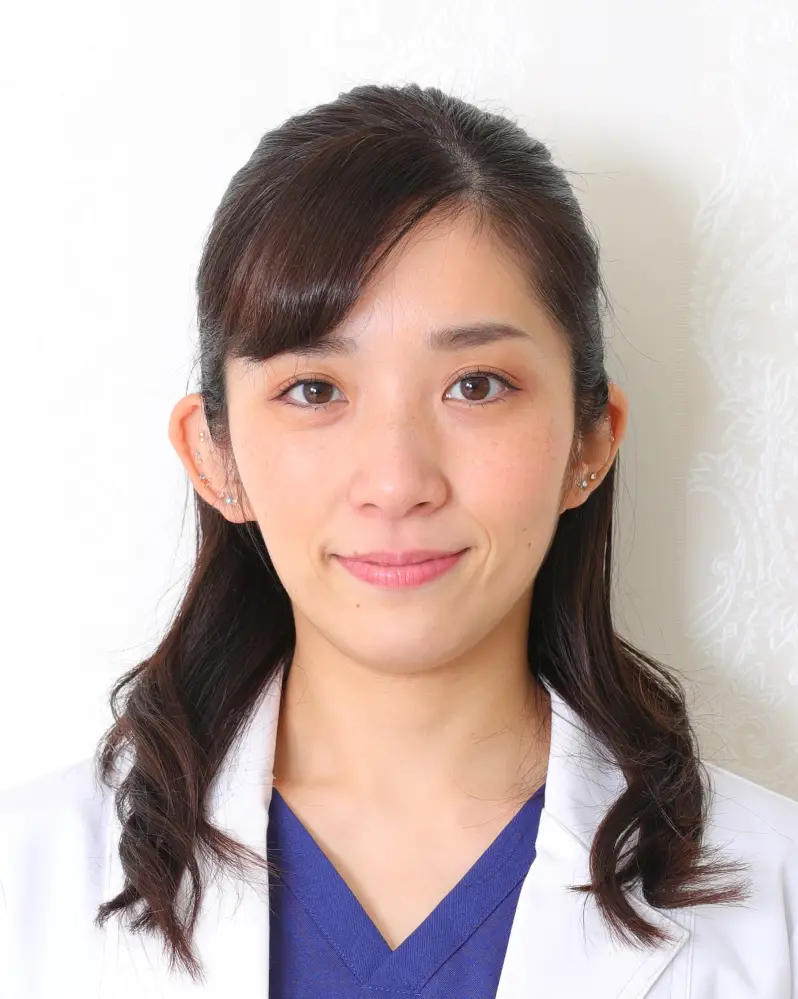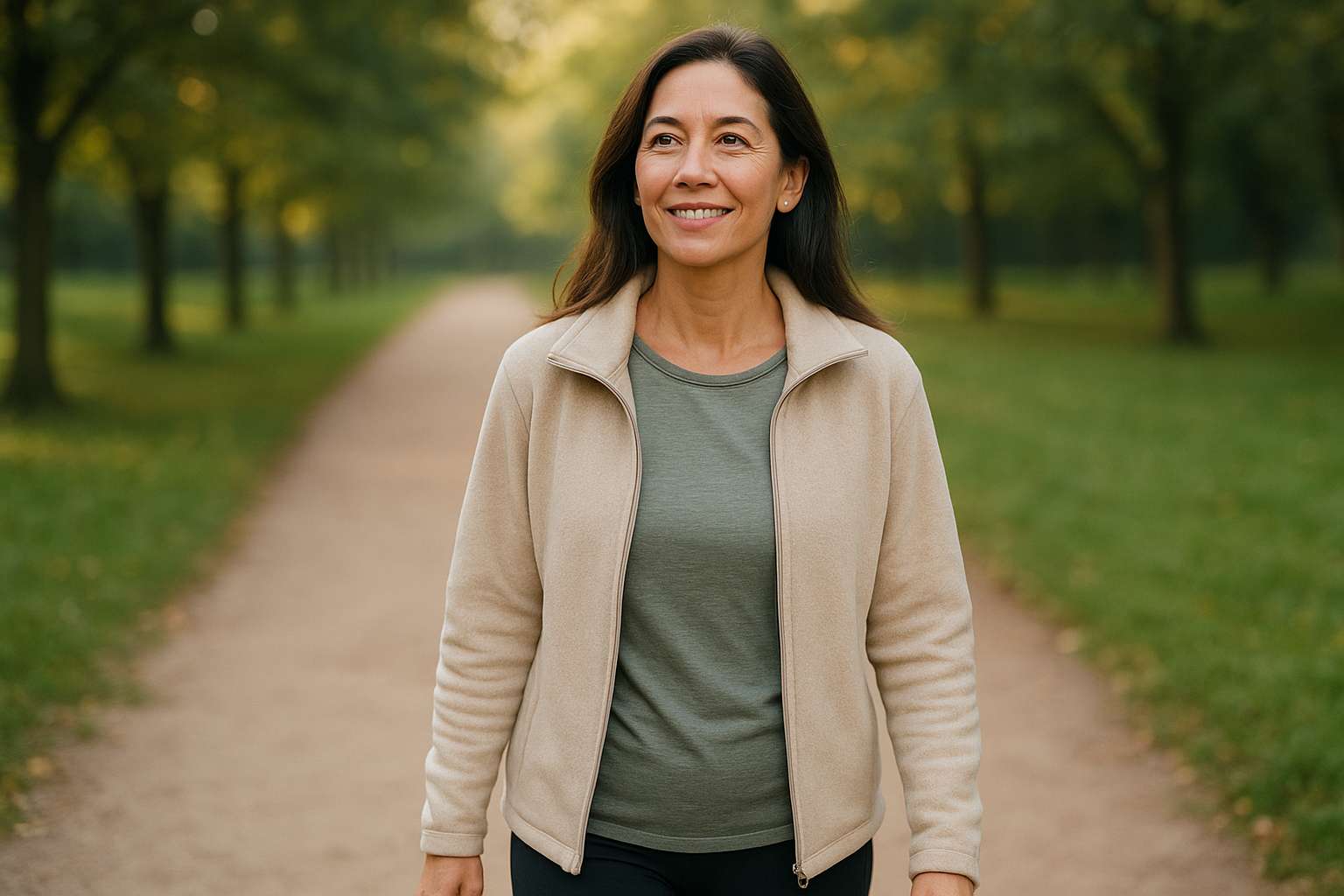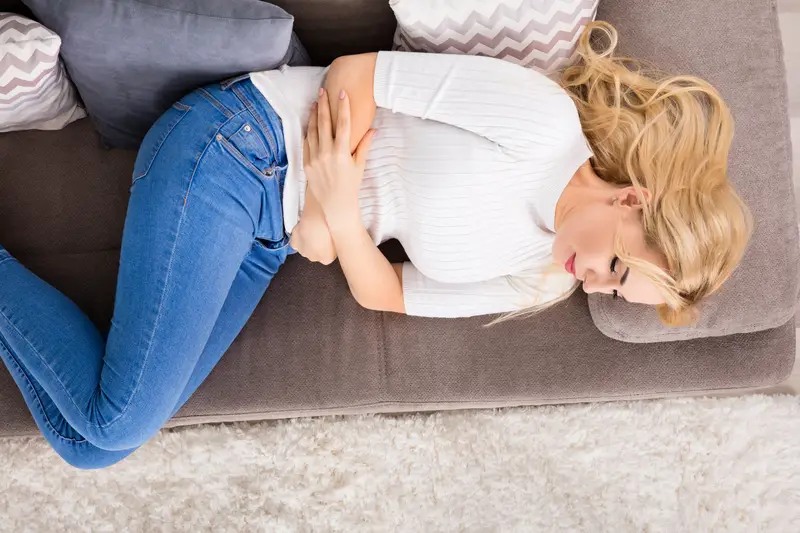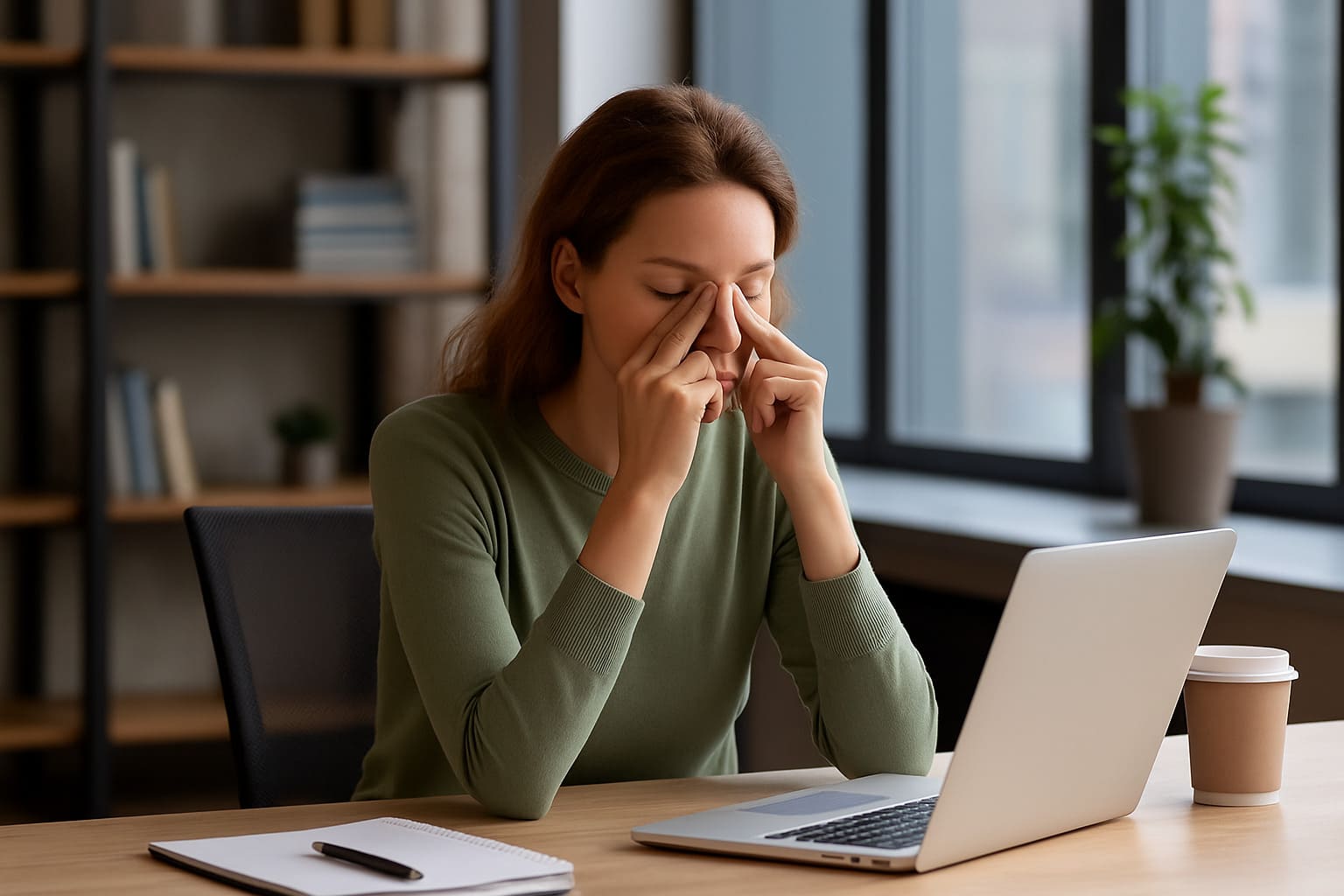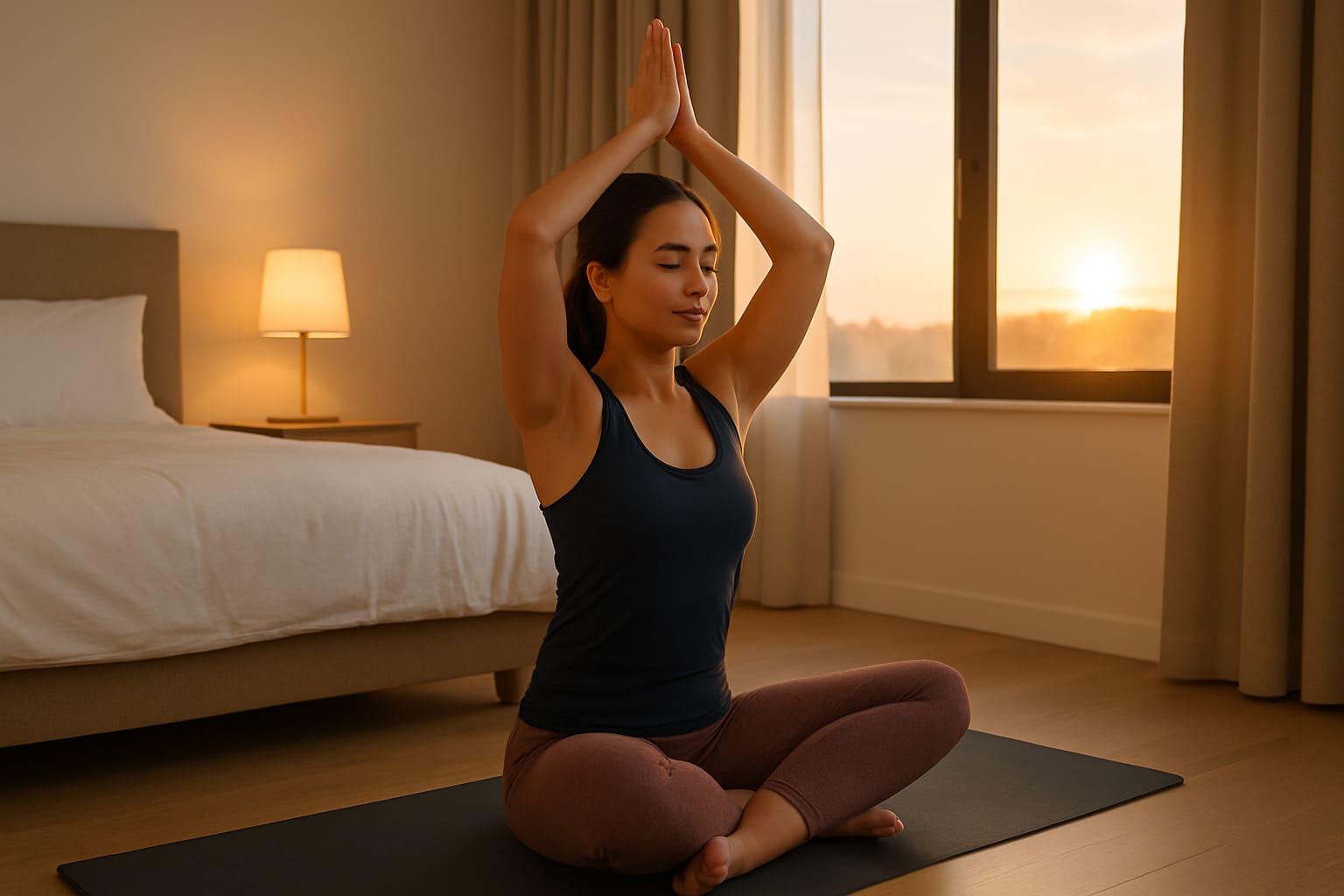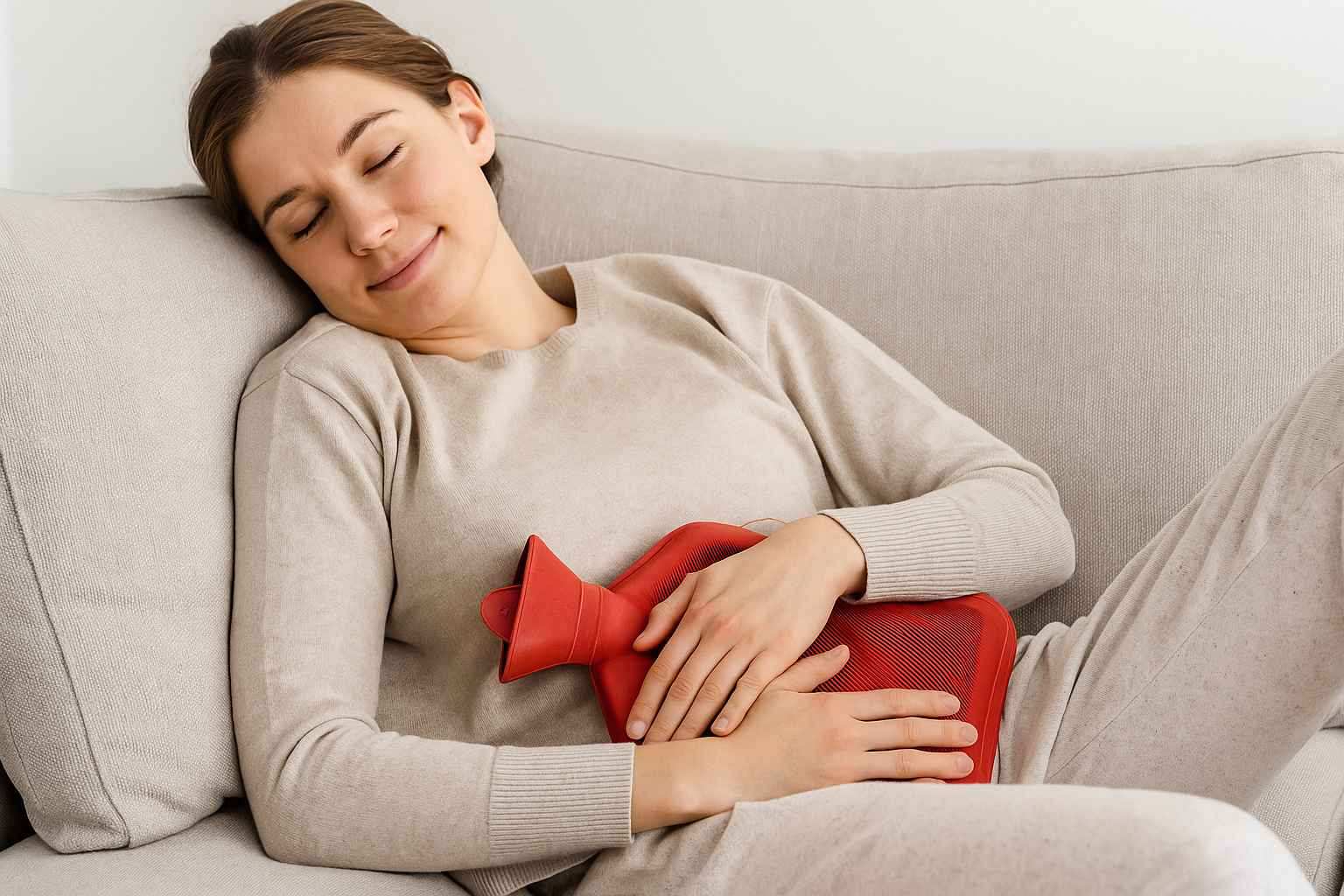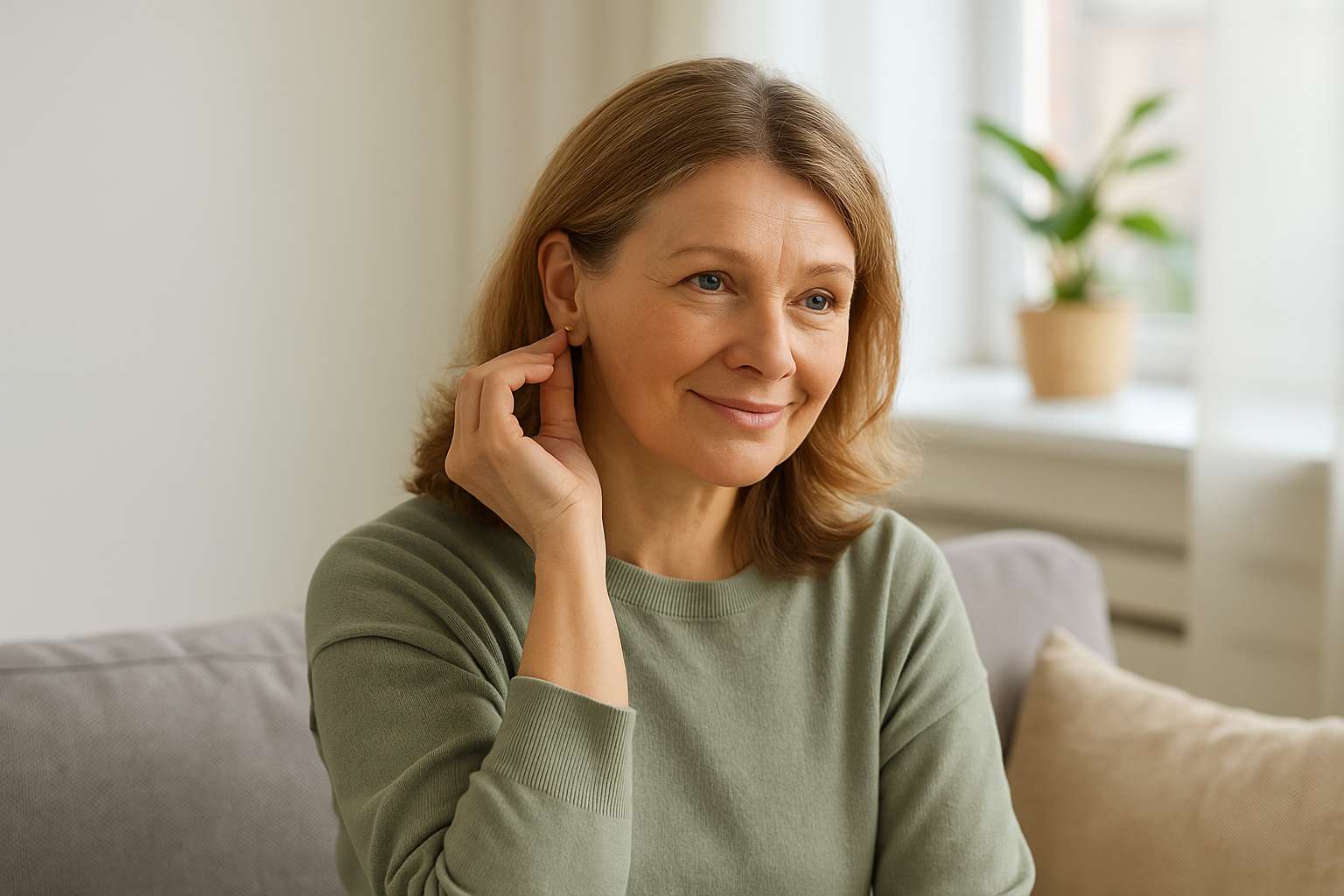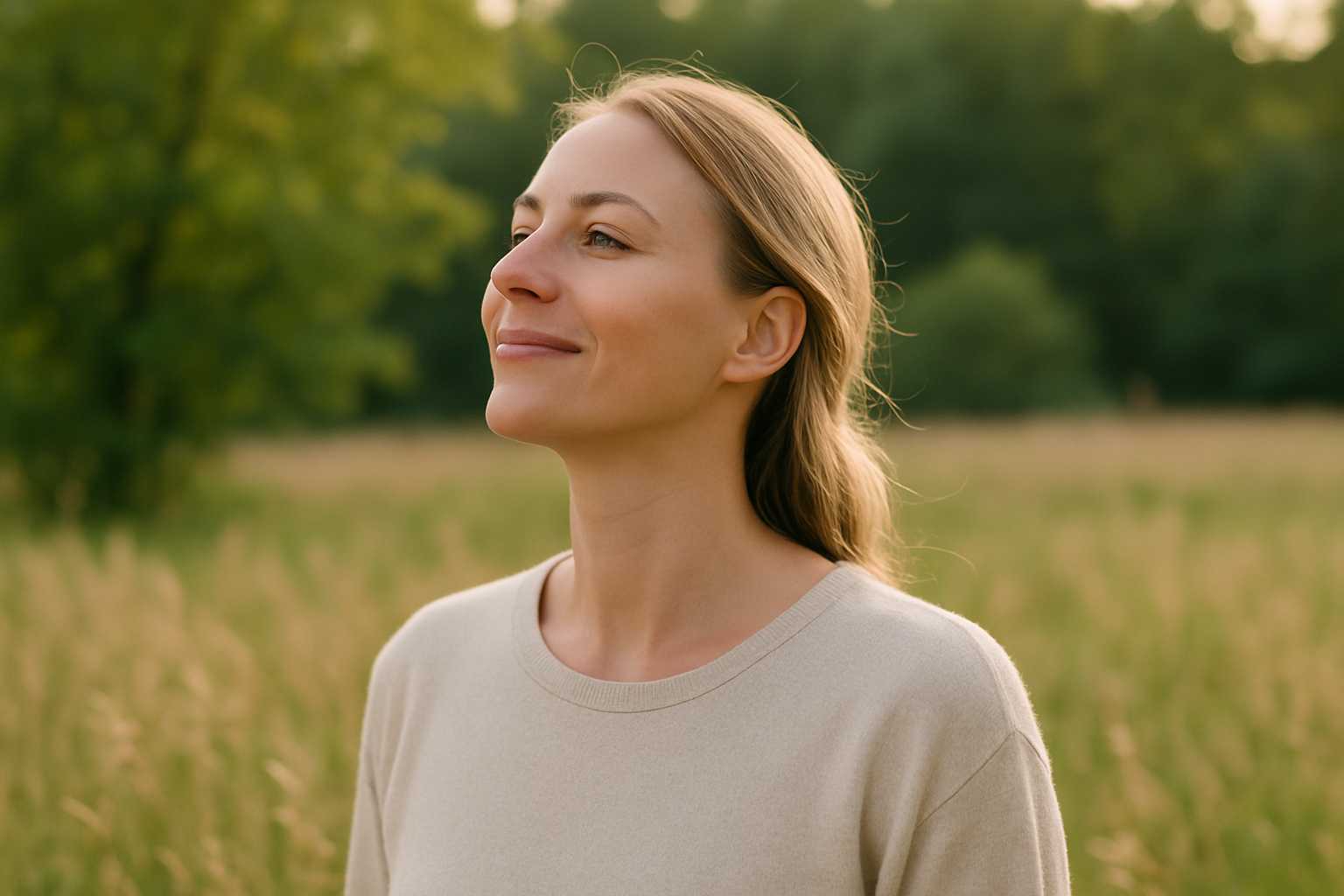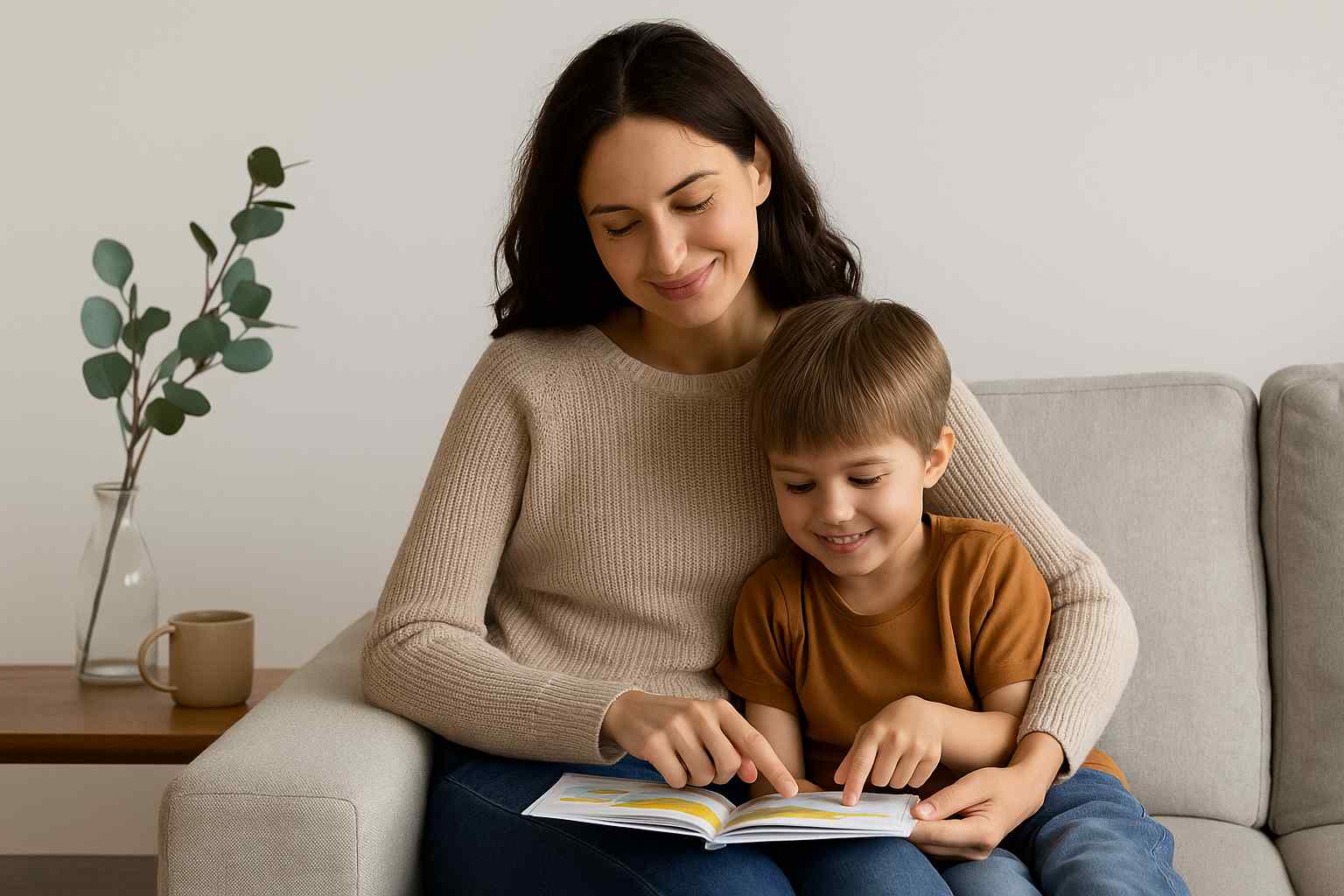Using Ear Seeds to Naturally Alleviate Mild Sleep Apnea Symptoms
For individuals dealing with mild sleep apnea, ear seeds for sleep apnea might provide a natural, non-invasive approach to support restful sleep and better breathing. Traditional Chinese Medicine (TCM) views the ear as a map of the entire body, and by stimulating specific points, you can influence various bodily functions, including the respiratory and nervous systems. To better understand how this works, we consulted TCM expert Ms. Mai Sogawa, who recommended three specific ear pressure points that may help alleviate mild sleep apnea symptoms. By activating these points with ear seeds, you may find it easier to maintain deep, uninterrupted sleep.
Ear seeds, tiny metal or plant-based beads, are applied to specific points on the ear, stimulating acupressure zones and supporting the body’s healing response. If you’re new to this practice, explore our complete guide to ear seeds for a deeper look at how ear seeds work, their benefits, and helpful usage tips. Let’s go over the three ear acupressure points that Ms. Mai recommends to naturally support sleep apnea relief.
How Ear Acupressure May Improve Sleep Apnea Symptoms
Ear acupressure is rooted in TCM’s belief that the ear contains points that correspond to different organs and systems. When stimulated, these points can influence functions like breathing and relaxation. In cases of mild sleep apnea—a condition where breathing stops and starts during sleep—ear acupressure can help by supporting airflow, calming the nervous system, and promoting a deeper, more restful sleep.
Here are the three ear points that Ms. Mai recommends for addressing mild sleep apnea symptoms.
Key Ear Acupressure Points for Sleep Apnea Relief
1. Lung Point (#2)
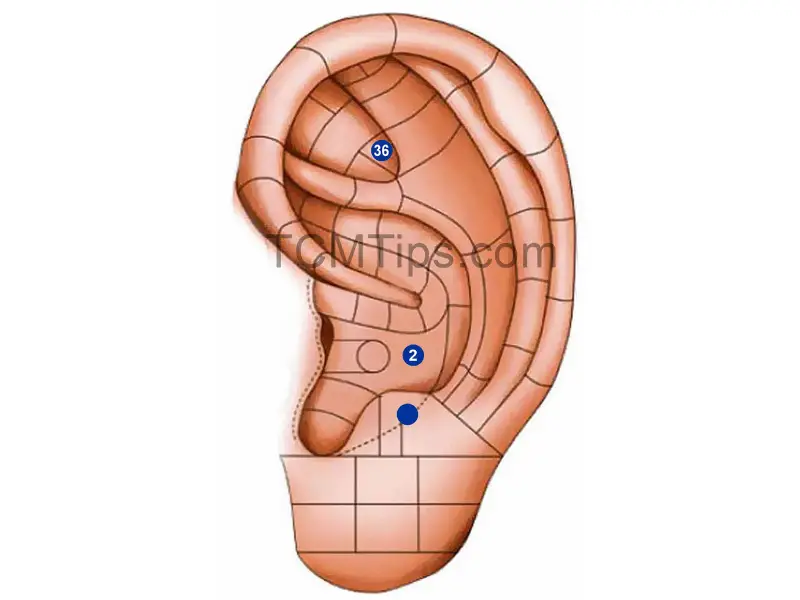
The Lung point is located in the lower part of the ear, in an area known as the “cavum conchae.” Since it’s connected to lung function and respiratory health, this point is particularly relevant for conditions affecting breathing, such as sleep apnea.
- Location: This point can be found within the hollow section of the lower ear, marked as #2 in the image.
- How It Helps: The Lung point supports lung qi, which can improve oxygen flow, facilitate smoother breathing, and help reduce symptoms like shortness of breath and breathing interruptions often associated with sleep apnea.
- How to Use: Apply an ear seed directly on the Lung point and press gently. Leaving it in place overnight can provide continuous support for respiratory function, especially beneficial during sleep.
2. Shenmen Point (#36)
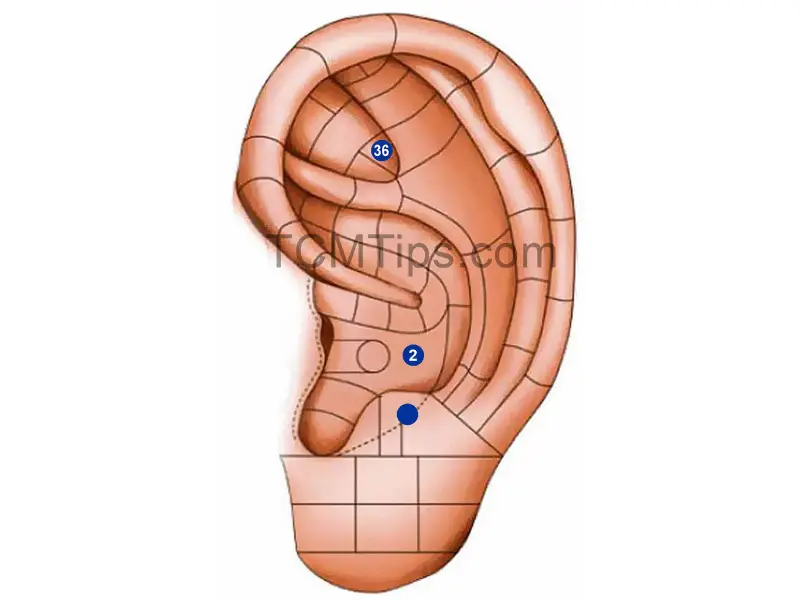
The Shenmen point, or “Spirit Gate,” is located near the upper ridge of the ear and is known in TCM for its calming effects. This point is frequently used to reduce stress and anxiety, making it helpful for sleep issues and overall relaxation.
- Location: Shenmen is positioned near the top of the ear, marked as #36 in the image.
- How It Helps: Activating the Shenmen point calms the mind and reduces nervous system tension, which can support a relaxed state and promote better sleep. By reducing stress and encouraging relaxation, Shenmen can be effective for improving sleep quality, especially in those with sleep apnea.
- How to Use: Place an ear seed on the Shenmen point and press lightly, allowing a feeling of calm to settle in. This practice can be particularly effective when included as part of a nightly pre-sleep routine.
3. Ms. Mai’s Specially Recommended Point

The third point suggested by Ms. Mai is a powerful spot known in TCM for its benefits to sleep and breathing, though it doesn’t have a specific English name. It is located near the lower edge of the ear and is marked by a blue dot in the image. This point is believed to support the body’s natural sleep cycle and can be particularly useful for addressing sleep apnea symptoms.
- Location: This point is situated toward the lower area of the ear, just above the earlobe, as indicated by the blue dot in the image.
- How It Helps: Stimulating this point may help regulate the body’s circadian rhythm, or natural sleep-wake cycle, which is essential for maintaining deep, uninterrupted sleep and reducing sleep apnea symptoms. When used alongside the Lung and Shenmen points, this point offers additional support for both respiratory function and relaxation.
- How to Use: Apply an ear seed on this point and press gently. Combine this with deep breathing exercises before bed to maximize its relaxation effects and prepare the body for restful sleep.
Tips for Applying Ear Seeds Effectively
If you’re new to using ear seeds, here are some tips to get the most benefit:
- Clean the Ear Area First: Clean your ears and dry them before placing ear seeds to ensure they adhere securely.
- Use Both Ears: Applying ear seeds on both ears (same points) can enhance balance and effectiveness.
- Press Regularly: Press on each seed a few times throughout the day, particularly before bedtime, to keep the acupressure points activated.
- Leave Overnight: For maximum benefit, especially for sleep apnea, keep ear seeds on overnight to maintain respiratory support while you sleep.
- Replace as Needed: Ear seeds can stay in place for up to 3–5 days. Replace them sooner if they become loose or start causing discomfort.
Safety Precautions and When to Seek Professional Advice
While ear seeds are generally safe for home use, some people may experience mild discomfort or irritation. If you have sensitive skin, consider using hypoallergenic ear seeds or consult a professional acupuncturist. Additionally, it’s important to note that ear seeds are best suited for mild sleep apnea and should not replace medical treatments for moderate to severe cases. For more serious sleep apnea, treatments like CPAP therapy may be necessary, so consult with a healthcare provider if you’re unsure about the best approach for your needs.
Final Thoughts
Ear seeds offer a gentle, natural method for supporting better sleep and breathing by stimulating key points that promote relaxation and respiratory health. By using the Lung, Shenmen, and Ms. Mai’s specially recommended point, you can enhance your nightly routine and potentially find relief from mild sleep apnea symptoms. With the guidance of experts like Ms. Mai Sogawa, ear acupressure can be an accessible tool for achieving deeper, more restful sleep.
For more information on using ear seeds, check out our complete guide to ear seeds to explore other health benefits, proper techniques, and additional tips for maximizing their effects.

Try our Anti-Aging Gua Sha Tool designed to bring out your skin’s natural glow.
Best Gua Sha Product- Anti-Aging: The tool is designed to target 11 specific aging signs such as wrinkles and sagging skin. By following the 7-step routine, users can improve skin firmness and reduce fine lines naturally.
- Enhances Skincare Routine: It works effectively with serums and lotions, boosting absorption and efficacy of skincare products.
- Visible Skin Improvement: Users can expect a smoother complexion, reduced puffiness, and a more youthful appearance.
 P. Sze
P. Sze 